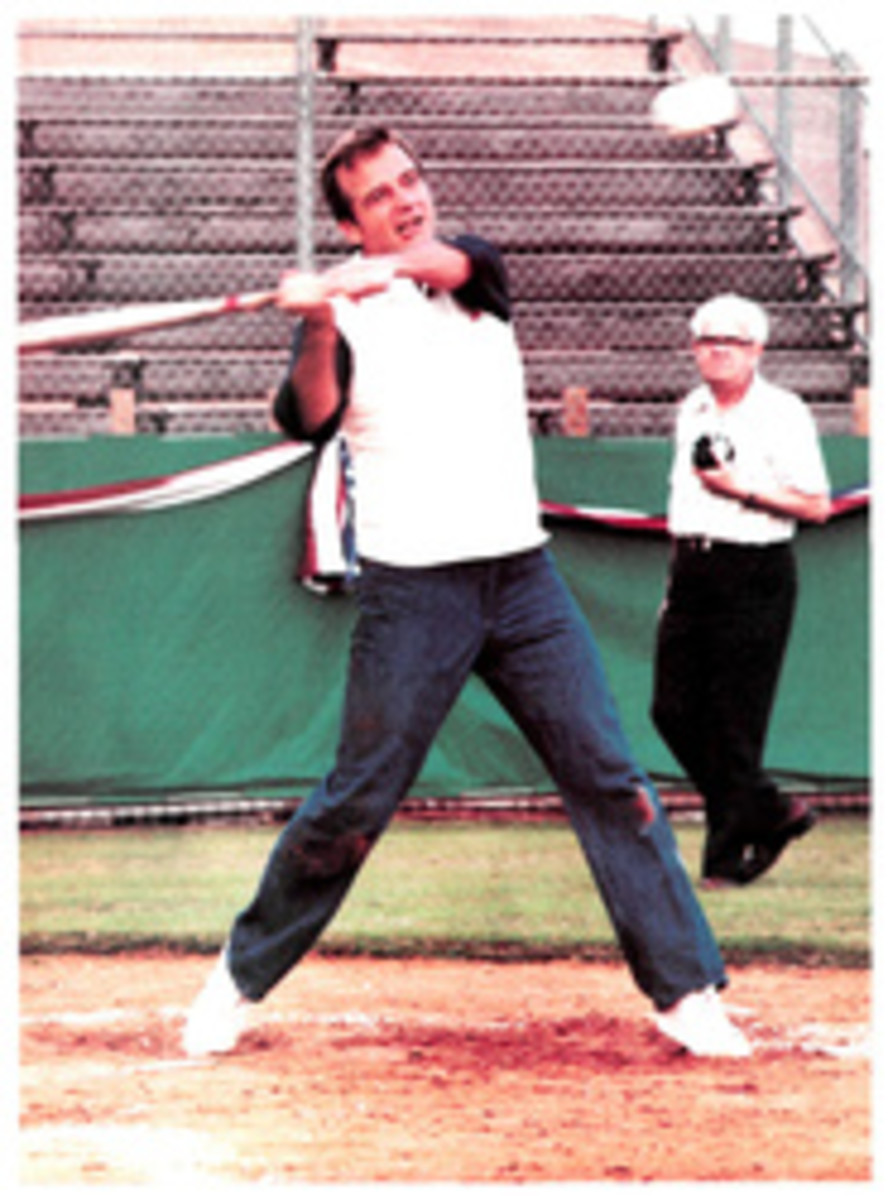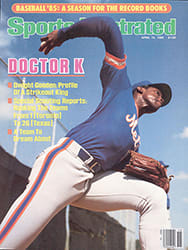
WHEN IT CAME TO HITTING HOME RUNS, ONLY THE BABE WAS FINER THAN KINER
Ralph Kiner was awkward in the outfield and slow on the basepaths, and for most of his career he played for the error-prone second-division Pittsburgh Pirates. Usually he was overshadowed by stars from more glamorous cities or better teams—the Musials, Williamses, DiMaggios. Even his belated election to the Hall of Fame in 1975 was regarded by many fans as having more to do with sentiment than merit, for he squeaked in by only one vote in his 15th and final year of eligibility. But there is no doubt about it, the man knew how to hit home runs. In his 10-year major league career, he established himself as one of the greatest sluggers in baseball history, hitting a home run every 14.1 times at bat, better than Mickey Mantle (15.1), Henry Aaron (16.4) and Willie Mays (16.5). Only the king of them all, Babe Ruth (11.8), hit home runs more frequently.
Consider the criteria by which we judge greatness. Certainly not by longevity. After all, was Gaylord Perry, who won 314 games in 22 years, a better pitcher than Sandy Koufax, who won 165 in 12 years? Of course not. Koufax established his credentials for immediate entry into the Hall of Fame by performing at an exceptional level of excellence for six glorious seasons. While a player has to shine for more than a season or two to prove his success is not just a fluke, he need not shine forever.
Kiner's career, like Koufax's, was relatively short but dazzling. In his first seven seasons in the majors he hit 294 homers—the most prolific such start ever—and he either led or tied for the lead in home runs every one of those seasons except his first. Between 1947 and 1951 he hit 234 homers, an average of 46.8 per year. No one in the history of major league baseball, with the single exception of Ruth, has ever hit more over a five-year span. In only two seasons did Aaron hit more than 44 home runs. Mays's best five seasons in a row brought him an average of slightly more than 45 homers per year.
Some might take exception to Kiner's being mentioned in the same breath with the legendary Ruth, but they shouldn't. Although Ruth continues to represent the standard against which all others must be judged, Kiner's home-run statistics compare favorably. In Ruth's best five consecutive seasons, from 1926 to 1930, he hit 256 home runs, an average of 4.4 home runs per year more than Kiner's production from '47 to '51. While that may appear to be a substantial difference, Ruth played in a different era, one in which there was no night baseball and not nearly as much relief pitching. And Ruth played only day games, facing throws made by wearier pitchers.
Kiner also played on second-division teams; it's harder to excel when there's no chance at a pennant and teammates can offer limited support. Hank Greenberg's 25 home runs in 1947 were the most hit by any of Kiner's fellow Pirates during his years in Pittsburgh. Ruth, Mays, Harmon Killebrew, Mantle, Aaron—all played on pennant-winners and were supported by such heavy hitters as Lou Gehrig, Willie McCovey, Bob Allison, Roger Maris and Eddie Mathews. Who can say how many home runs these second bananas helped the top bananas produce?
Many will say that my argument fails to give ample credit to the enormous number of career home runs hit by Kiner's competitors. However, a back injury forced Kiner to retire at 32, while Ruth and Aaron both hit more than 350 home runs from that age on. We don't blame Koufax for the injury that ended his career, and Kiner should be acquitted as well.
A man of integrity, Kiner trusted baseball to be as equitable to him as he was to it. "I have found that if you try to be fair in your dealings, other people will be fair with you later on," he said in 1954, after requesting an astonishing 38.5% pay cut because of his subpar performance that season. Unfortunately, that fairness hasn't been forthcoming and, his Hall of Fame status notwithstanding, a great many baseball fans still deny Kiner the recognition he deserves. While Ruth, Mays and Aaron were far better all-around hitters and a cast of thousands could field with more dexterity, when it came to hitting the ball out of the ball park, Kiner was a giant. So, keep Ruth at the top of your list—that's as it should be. But clear out some room in the upper reaches for Kiner.

